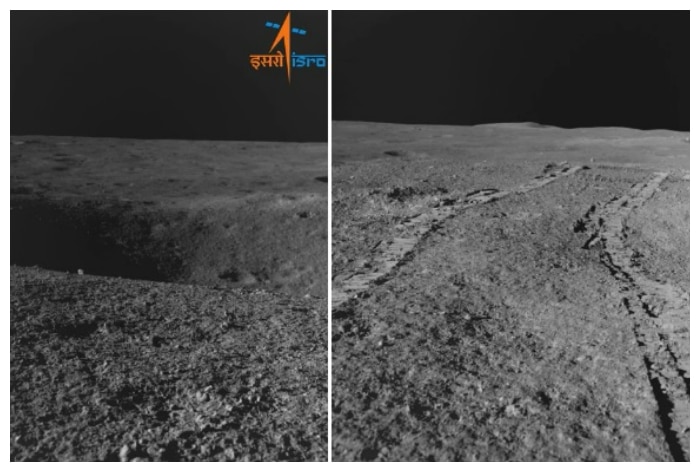Chandrayaan-3’s rover Pragyan is safely moving on a new path.
Chandrayaan-3 Updates: ISRO said on Monday that on August 27, a 4-meter diameter (wide) crater came in front of Chandrayaan-3’s rover Pragyan. This crater was 3 meters ahead of the rover’s location. In such a situation, the rover was given the command to change the path.
Now it is safely moving on a new path. Even before this, Pragyan had passed through a small crater about 100 mm deep. The rover’s operation on the Moon is semi-autonomous. Commands are given from ground stations to run it.
The Path Is Decided On The Basis Of Rover’s Data
For the rover’s path planning, the rover’s onboard navigation camera data is downloaded to the ground. Then the ground and mechanism team decide which path to take. The command is then uplinked to give the path information to the rover.
Just like the human eye can only see up to a certain distance, the rover also has its limits. The rover’s navigation camera can only send images up to 5 metres away. In such a situation, once given a command, it can cover a maximum distance of 5 meters.
Rover Moving At Speed Of 1 CM Per Second
The six-wheeled rover weighs 26 kg. On Thursday morning, about 14 hours after landing, ISRO confirmed the rover’s exit. The lander landed on the moon on August 23 at 6.04 p.m. It moves at a speed of 1 cm per second and uses navigation cameras to scan its surroundings.
Sizable Differences In Temperature On Surface Of Moon And At Different Depths
Earlier on August 27, the ChaSTE payload fitted in Vikram Lander of Chandrayaan-3 had sent the first observation related to the temperature of the Moon. According to ChaSTE, i.e., Lunar Surface Thermophysical Experiment, there is a great difference in temperature on the surface of the Moon and at different depths.
The temperature on the surface of the Moon’s south pole is about 50 degrees Celsius. Whereas, minus 10 degrees Celsius temperature was recorded at a depth of 80mm. ChaSTE has 10 temperature sensors that can reach a depth of 10cm or 100mm.
The ChaSTE payload has been developed by the Space Physics Laboratory, VSSC in collaboration with the Physical Research Laboratory, Ahmedabad.
What Is The Benefit Of Knowing The Temperature Of The South Pole?
ISRO chief S Somnath said that they chose the Moon’s South Pole because it may have the potential to settle humans in the future. Sunlight lasts for a short time at the South Pole.
Now that Chandrayaan-3 is sending clear information about temperature and other things there, scientists will try to understand how much capacity the soil of the Moon’s south pole actually holds.

Don’t Miss Out on the Latest Updates.
Subscribe to Our Newsletter Today!


